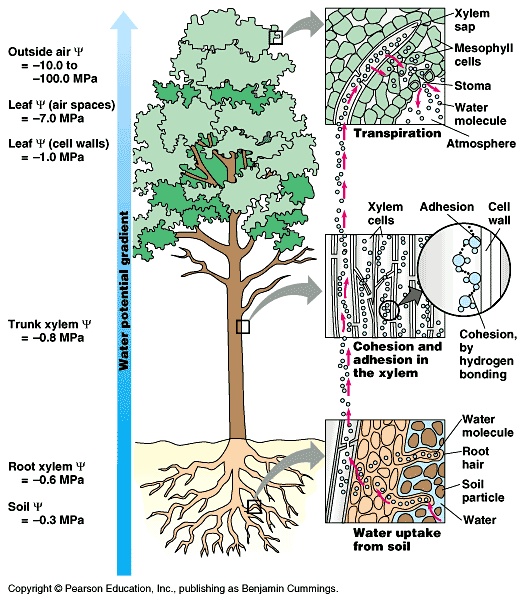Transport of water and dissolved minerals salts, from soil into the roots by two process. One is diffusion and osmosis and second is active transport. The first process is diffusion. The diffusion is the movement of a liquid or gas from a region of higher concentration to a region of lower concentration.
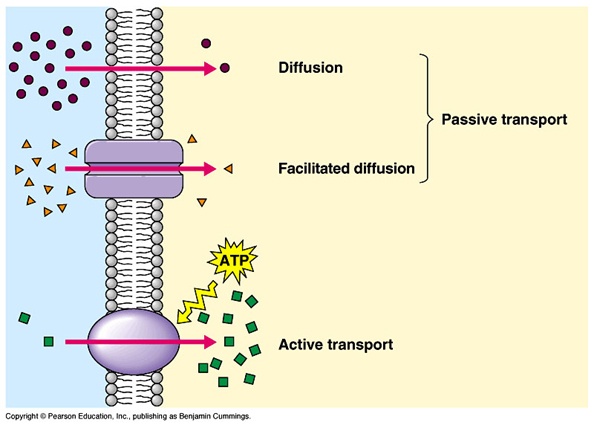
Sometime the process of diffusion take place through a membrane. Transport of water molecules, from an area of higher concentration to an area of lower concentration, through a semi permeable membrane is called osmosis. Normal way of movement of molecules is by diffusion or osmosis. These process is called "passive transport".
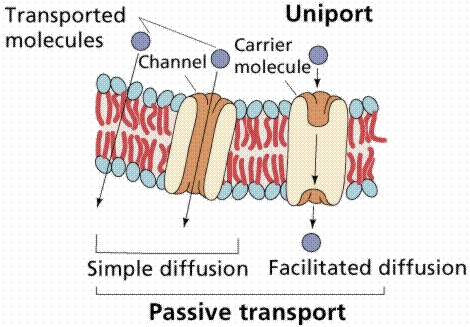
Passive transport is the major process which involves in the absorption of water through root hairs and roots cells. When the plants are watered, the concentration of water molecules is increased outside the root hairs. Hence the water start entering by diffusion process. As the cell wall is fully permeable it causes no hindrance, but water crosses cell membrane by the process of osmosis. Dissolved minerals salts are also absorbed by the process of diffusion.
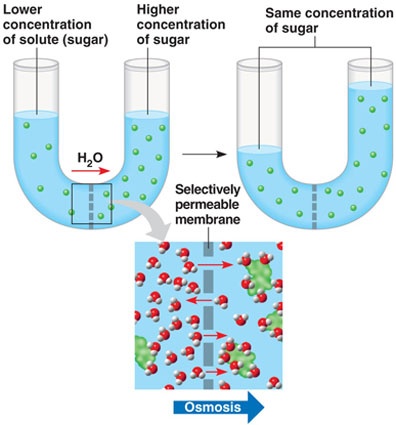
The second process is active transport. Transport which take place against the concentration gradient is called "active transport". Imagine a type of ion is already in higher concentration inside the cells of root hair. Normally when their concentration is lesser in outside soil, they shall start leaking out of root hairs but this never happens. Rather by using energy, plant absorbs more and more salt ion from outside and hold them inside its cell sap.
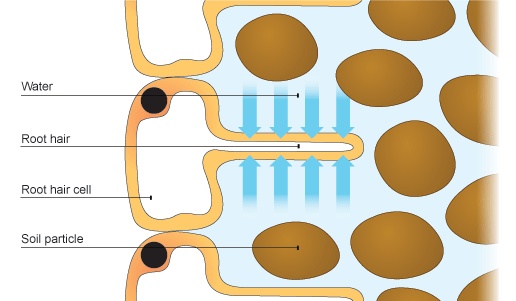
Thus we can describe active transport as the process in which ions move from a region of lower concentration to a region of lower concentration through cell membrane by the use of energy in the form of ATP. Most of the ions in plants are absorbed by active transport. Once the water and minerals ions reach xylem vessels, it starts moving up. This upward movement is due to many processes, the most important is the transpiration pull.
